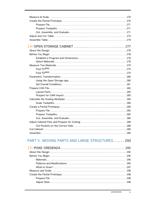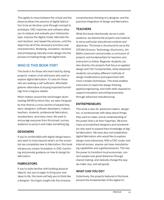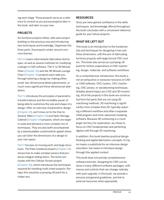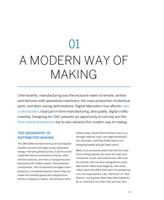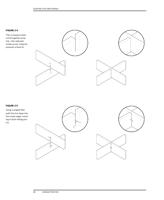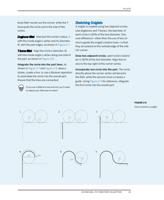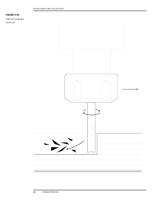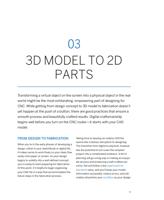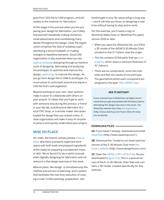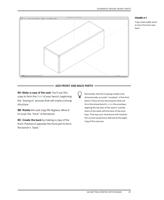
1. Orthogonal, at right
angles.
THE 5-30 MINUTE CHAIR
tions of customization by makers who were
downloading it. In this open context, we see a
designer’s role as offering up an elemental,
well-functioning object, which is embedded
with an invitation for others to make it their
own, and then to keep sharing.
But before any of this was possible, there were
some very basic and fundamental design chal-
lenges presented by the chair. How could flat
sheet material components comfort the human
body in the same way that contoured or uphol-
stered chairs do? How would flat parts angled
for posture be joined to adjacent parts? How
does the chair handle the intensive lateral
forces caused by sitting down and standing up?
What is the thinnest profile that will still pre-
serve structural integrity? How are successful
outcomes and “quality control” ensured, when
the chair is downloaded and made half a world
away? How does a designer propose something
that invites others to evolve it?
We knew the chair couldn’t be made comforta-
ble by adding upholstery or by molding or con-
touring parts, so we tried to understand how
comfortable it could be with the flat materials
and CNC profile toolpaths we were using. An
important rule for a designer is to be honest
with the materials and tools at hand, to under-
stand what’s possible, and to work with it
directly. We estimate that this chair will remain
comfortable for 5 to 30 minutes of sitting.
Since some portion of comfort is related to bal-
ance and distribution of weight in a sitting
body, its proportions are drawn from basic
ergonomic rules, which determine the optimal
angle for the chair’s seat and back. The chair
poses the sitter’s center of gravity at the center
of its structure. This leads most people who sit
in it to remark that it is more comfortable than
it looks!
Structurally, the chair’s interlocking joints dis-
tribute loads and forces from the seat and seat-
back into the sides, and from the four legs into
the feet. (see “Structures” on page 56) While
the 5-30 Minute Chair uses fasteners as secon-
dary elements that hold individual parts
together, the slots and tabs do all of the serious
structural work, distributing the loads and
forces into adjacent pieces.
INTEGRATED JOINERY VERSUS MOMENT
CONNECTIONS
Furniture made with integrated plywood joinery is
furniture that will last. The many distributed inter-
locking slots and tabs that connect each furniture
part are inherently strong and will remain intact
despite pressure, force, and even abuse. Such struc-
tural integrity ensures that a piece of furniture can
remain sturdy and functional, even as it endures
years or even decades of intensive use. In contrast,
most flatpack chairs and furniture have moment-
frames, where loads and forces are concentrated at
mechanical connections in the corners and edges of
the furniture. Such connections will not endure use
and abuse over time, making the furniture that relies
on them less durable and sustainable.
Some of the most recognizable attributes of
the chair emerged from unique functional and
structural challenges. For instance, our system
of assemblies, structures, and programs did
not offer an obvious solution for introducing a
sloped seat and back into a fabrication system
optimized for flat, orthogonally 1 arranged
parts. We resolved the challenge by altogether
avoiding the intersection of these two non-
orthogonal parts and leaving a gap between the
seat and the seat back. For us, sometimes
selectively avoiding an issue like this can be a
design strategy in and of itself. We fixed the
seat in place laterally with a tab that slots
through its front edge (Figure 2-35), and
secured the seat vertically with three-sided
60
DESIGN FOR CNC













